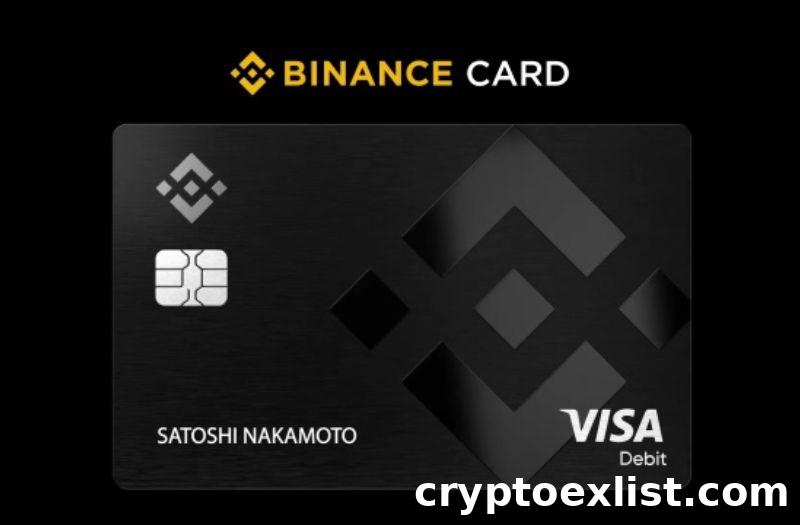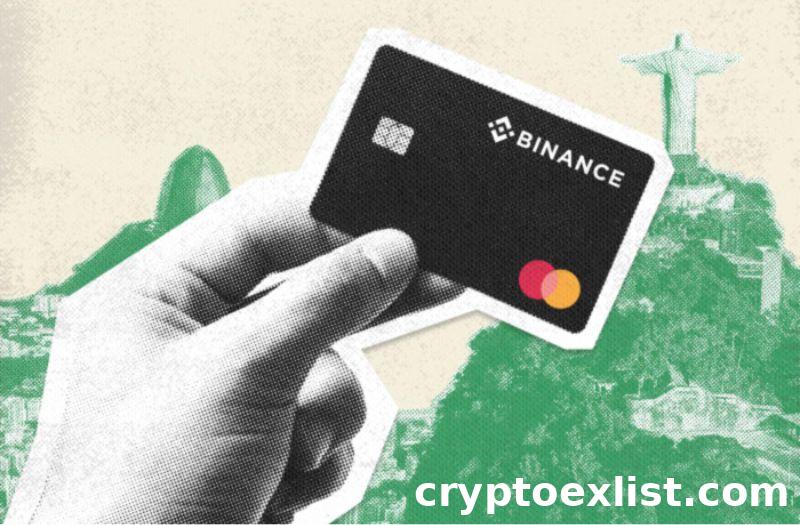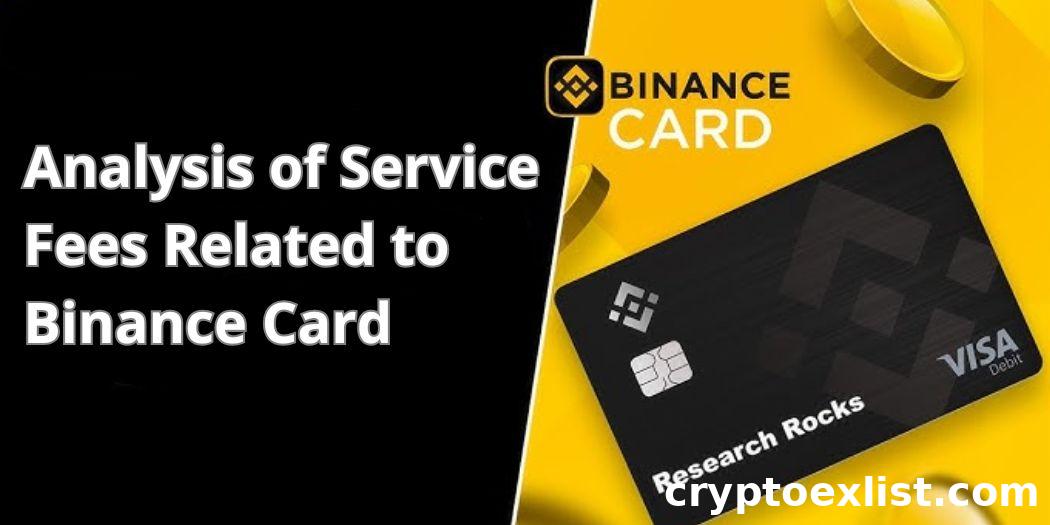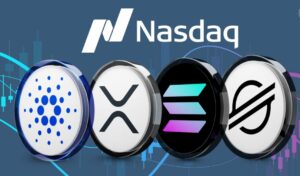
The Binance Card offers a user-friendly way to integrate cryptocurrency into daily spending, but understanding the associated service fees is essential for making the most of its features. From initial setup and issuance fees to transaction and conversion charges, the costs involved can influence how users choose to use the card. This guide breaks down the different fees, compares the Binance Card with other popular crypto cards, and explores how fees impact user spending habits, making it a must-read for newcomers eager to make informed decisions.
Introduction to Binance Card
Overview of the Binance Card
The Binance Card is a cryptocurrency-powered debit card that allows users to spend their digital assets just like traditional fiat currency, making it an ideal solution for anyone looking to integrate crypto into everyday life. Issued by Binance, one of the world’s leading cryptocurrency exchanges, the card seamlessly converts your chosen cryptocurrency into fiat at the point of sale, allowing you to make purchases both online and in-store. It functions similarly to a regular debit card but with the added advantage of utilizing your crypto holdings, including popular coins like Bitcoin (BTC), Ethereum (ETH), and Binance Coin (BNB). For newcomers, the Binance Card removes the complexities associated with crypto transactions by automatically handling conversions, making the process of using digital assets as simple as swiping a regular card.
Purpose and Benefits of Using the Binance Card
The primary purpose of the Binance Card is to provide users with a convenient way to spend their cryptocurrencies on everyday purchases without the need for manual conversions or third-party exchanges. This card bridges the gap between traditional financial systems and the world of digital assets, offering a solution for crypto enthusiasts who want to use their holdings for more than just investments. One of the major benefits of using the Binance Card is its cashback rewards program, which allows users to earn up to 8% cashback in Binance Coin (BNB) on eligible purchases. Additionally, there are no hidden fees for card payments, making it a cost-effective choice for those who frequently use cryptocurrency. For beginners, the Binance Card not only simplifies crypto spending but also offers an easy way to start using digital assets in everyday life, from shopping online to dining out, all while earning rewards and enjoying seamless transactions.

Understanding Service Fees
Definition of Service Fees
Service fees refer to the charges imposed by financial institutions or service providers for the use of their products or services. These fees can apply to a variety of financial activities, including card transactions, withdrawals, and account maintenance. In the context of the Binance Card, service fees may include costs associated with currency conversion, ATM withdrawals, or international transactions. However, it’s important to note that the Binance Card is designed to be as cost-effective as possible, with no hidden fees for regular card payments. For beginners, understanding service fees is essential for effective financial management, as it helps you anticipate any costs associated with using your card.
Types of Service Fees in Financial Services
There are several types of service fees commonly associated with financial services, including those relevant to the Binance Card. These may include currency conversion fees, which apply when converting cryptocurrency into fiat currency at the point of sale, although Binance aims to offer competitive rates for these transactions. ATM withdrawal fees may also apply if you use the card to withdraw cash, particularly when withdrawing from foreign ATMs. Additionally, some financial institutions charge foreign transaction fees when making purchases in a different currency, although the Binance Card keeps these to a minimum. For beginners, being aware of the various types of service fees ensures that you can plan your transactions wisely and avoid any unexpected costs, allowing you to enjoy the full benefits of using your Binance Card.

Breakdown of Binance Card Fees
Understanding Binance fee structure of the Binance Card is essential for users to maximize its benefits and avoid unexpected charges:
Initial Setup Fee
When getting started with the Binance Card, you’ll be pleased to know that there is no initial setup fee, making it a cost-effective option for newcomers who want to start using cryptocurrency for everyday purchases. Unlike some traditional debit or credit cards, Binance does not charge an upfront fee to activate your card, whether you’re opting for the virtual card or ordering a physical one. This free setup encourages new users to try out the Binance Card without worrying about upfront costs, making it an appealing choice for those taking their first steps into the world of crypto-powered payments.
Card Issuance Fee
The card issuance fee is another important consideration when signing up for the Binance Card. Fortunately, Binance keeps things straightforward by not charging any fees for issuing the virtual Binance Card. If you decide to request a physical card, there may be a small one-time fee to cover the production and shipping costs, depending on your region. This fee is usually nominal, making it affordable for most users who prefer having a physical card for in-store purchases or ATM withdrawals. For beginners, understanding the card issuance fees ensures you know what to expect upfront and can plan accordingly.
Monthly Maintenance Fee
The Binance Card does not impose a monthly maintenance fee, which is a significant advantage over many traditional financial products that charge a recurring fee for card usage. With no monthly maintenance costs, users can continue to enjoy the benefits of the Binance Card without worrying about any hidden or recurring charges. This makes it especially appealing for beginners who are new to crypto and want to explore spending their digital assets without any financial burden. The absence of a monthly fee allows users to keep their card active even if they only use it occasionally, making it a flexible option for managing cryptocurrency.
Transaction Fees
When using the Binance Card for transactions, one of the standout features is that there are no fees for standard purchases, whether online or in-store. This means you can make everyday purchases with your crypto without incurring extra charges. However, there may be fees for certain activities, such as ATM withdrawals, especially if you’re withdrawing in a foreign currency or exceeding the free withdrawal limit. For beginners, understanding the fee structure for transactions helps you plan your spending effectively and avoid any surprise costs, allowing you to enjoy the convenience of using your Binance Card for both small and large purchases.
Currency Conversion Fees
When spending cryptocurrency using your Binance Card, the card automatically converts your digital assets into fiat currency at the time of the transaction. The good news is that Binance offers competitive exchange rates, ensuring you get a fair conversion when making payments. While the card itself doesn’t charge a separate currency conversion fee, it’s important to be aware that the exchange rate applied during the conversion may fluctuate slightly depending on market conditions. For beginners, this means you can use the Binance Card for international purchases or travel without worrying about hefty conversion charges, making it a practical choice for those looking to spend crypto globally.
Comparison with Other Crypto Cards
Binance Card vs Coinbase Card
When comparing the Binance Card with the Coinbase Card, both offer convenient ways to spend cryptocurrency, but there are notable differences in their features and fee structures. The Binance Card stands out by offering up to 8% cashback rewards on eligible purchases, which is higher than the cashback rates typically provided by the Coinbase Card. Additionally, Binance does not charge an initial setup fee or monthly maintenance fee, making it a more cost-effective choice for long-term use. On the other hand, the Coinbase Card allows users to earn rewards in multiple cryptocurrencies, providing more flexibility in how cashback is distributed. However, Coinbase may charge fees for specific transactions, such as crypto-to-fiat conversions, while Binance strives to keep transaction costs minimal for its users. For newcomers, the choice may come down to preferred rewards and the overall fee structure, with the Binance Card offering a strong combination of cashback and low fees.
Binance Card vs Crypto.com Card
The comparison between the Binance Card and the Crypto.com Card reveals both similarities and unique advantages. While the Crypto.com Card offers a tiered rewards system based on the amount of CRO tokens staked, which can result in cashback rewards of up to 5%, the Binance Card does not require users to stake tokens to enjoy its up to 8% cashback, making it more accessible for beginners. Additionally, Binance offers a wider range of supported cryptocurrencies for payments, allowing users to choose from multiple digital assets beyond just a few major coins. In terms of fees, the Crypto.com Card may impose some monthly maintenance fees or require staking to unlock certain benefits, whereas the Binance Card does not charge a monthly fee. For those new to crypto, the Binance Card provides a straightforward approach with rewards and features available to all users without any staking requirements, making it a user-friendly option for those starting their crypto journey.
Unique Features of Binance Card
The Binance Card offers several unique features that set it apart from other crypto cards in the market. One of the standout features is its competitive cashback rewards of up to 8%, which is calculated based on your average monthly BNB holdings, giving users a rewarding experience without any staking requirements. Another unique aspect is the automatic crypto-to-fiat conversion, which makes transactions seamless by converting the selected cryptocurrency at the time of purchase. This allows users to effortlessly spend multiple digital assets without manual exchanges. The card also supports real-time transaction notifications, providing users with updates on their spending and balance, ensuring complete transparency and control over their finances. For beginners, these features make the Binance Card not only a practical tool for everyday use but also an effective way to explore the benefits of cryptocurrency in real life.

Impact of Fees on Usage
Frequency of Transactions
The fees associated with the Binance Card can significantly influence the frequency of transactions made by users. Since the Binance Card does not charge fees for regular in-store or online purchases, users are encouraged to make everyday transactions without worrying about additional costs. This fee structure is particularly appealing for those who want to use their cryptocurrency for daily expenses, such as groceries, dining, or online shopping. However, fees may come into play for specific activities like ATM withdrawals or foreign transactions, which could lead some users to limit such activities to avoid extra charges. For beginners, understanding how fees can impact transaction frequency can help optimize their use of the Binance Card, encouraging them to prioritize fee-free spending and earn cashback rewards for frequent purchases.
Spending Patterns Among Users
The Binance Card’s fee structure also affects spending patterns among users, with many adopting strategies to maximize rewards while minimizing costs. For instance, users who frequently make purchases in their local currency can benefit from the lack of currency conversion fees, making it cost-effective to use the card for everyday payments. On the other hand, users who travel internationally or make purchases in different currencies may need to consider foreign transaction fees, which could influence how often they use the card while abroad. The cashback rewards program, offering up to 8% cashback on eligible transactions, further shapes spending habits by motivating users to make more purchases with the Binance Card to accumulate rewards. For newcomers, being aware of these spending patterns can help them make informed decisions on when and how to use the card, allowing them to take full advantage of the fee structure while aligning their spending habits with optimal usage practices.
Conclusion
The Binance Card provides a practical and cost-effective way to spend cryptocurrency, with a fee structure designed to encourage frequent and everyday use. While there are certain fees to be aware of, such as those for international transactions or specific activities like ATM withdrawals, the card remains one of the more competitive options in the market. For beginners, understanding these fees and how they compare to other crypto cards can help in optimizing the use of the Binance Card. By being mindful of spending patterns and strategically using the card to maximize rewards























